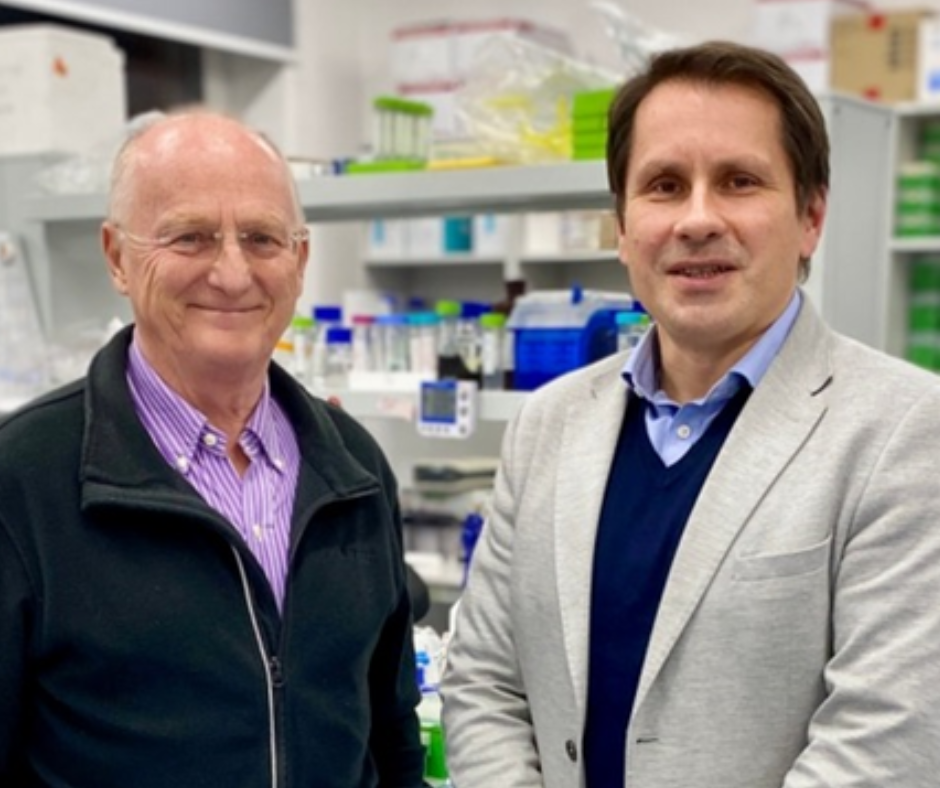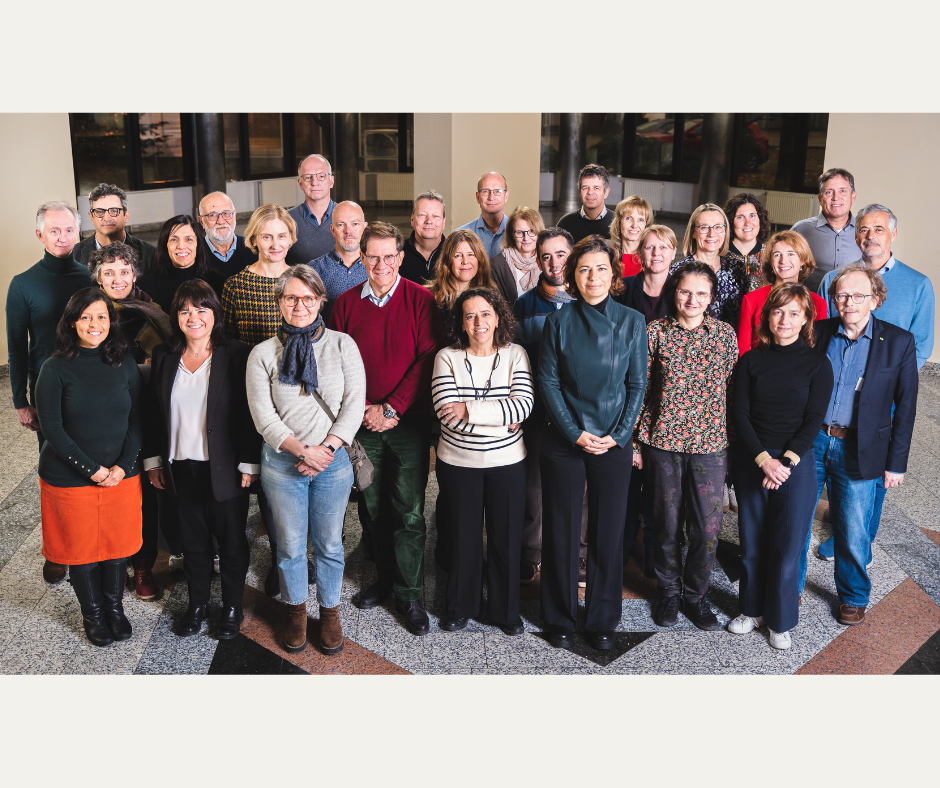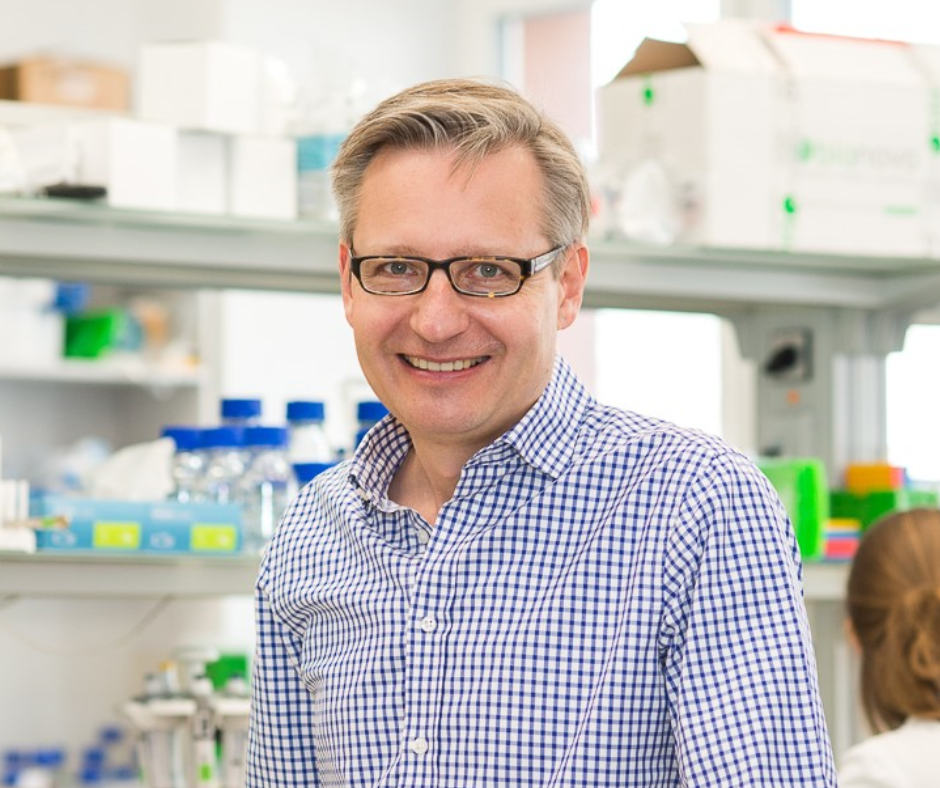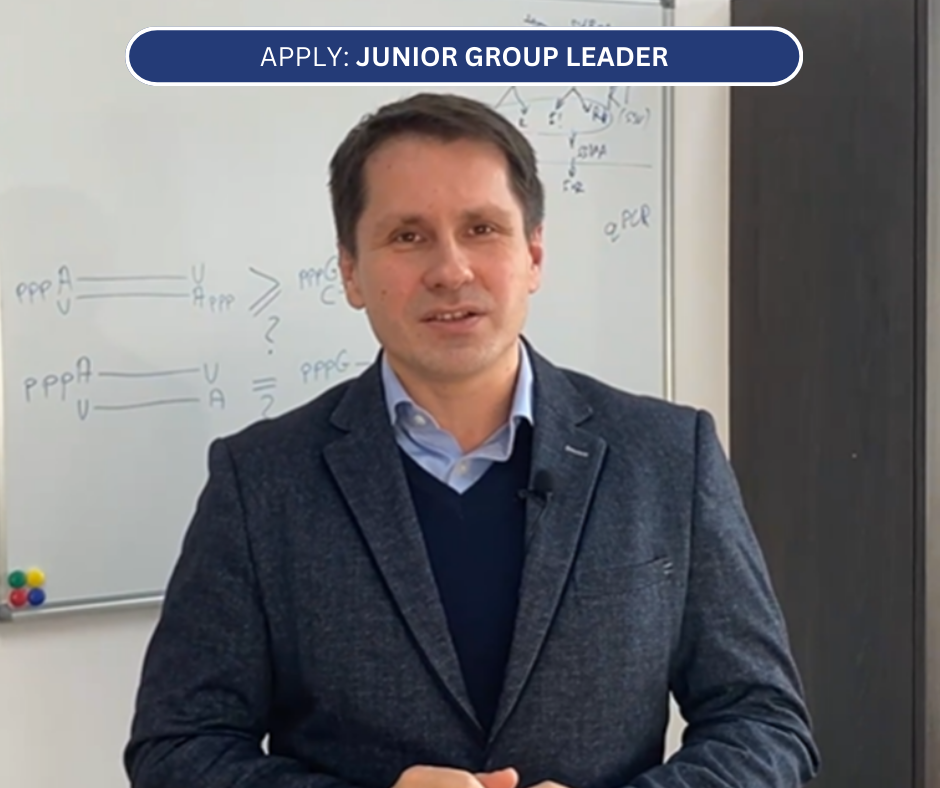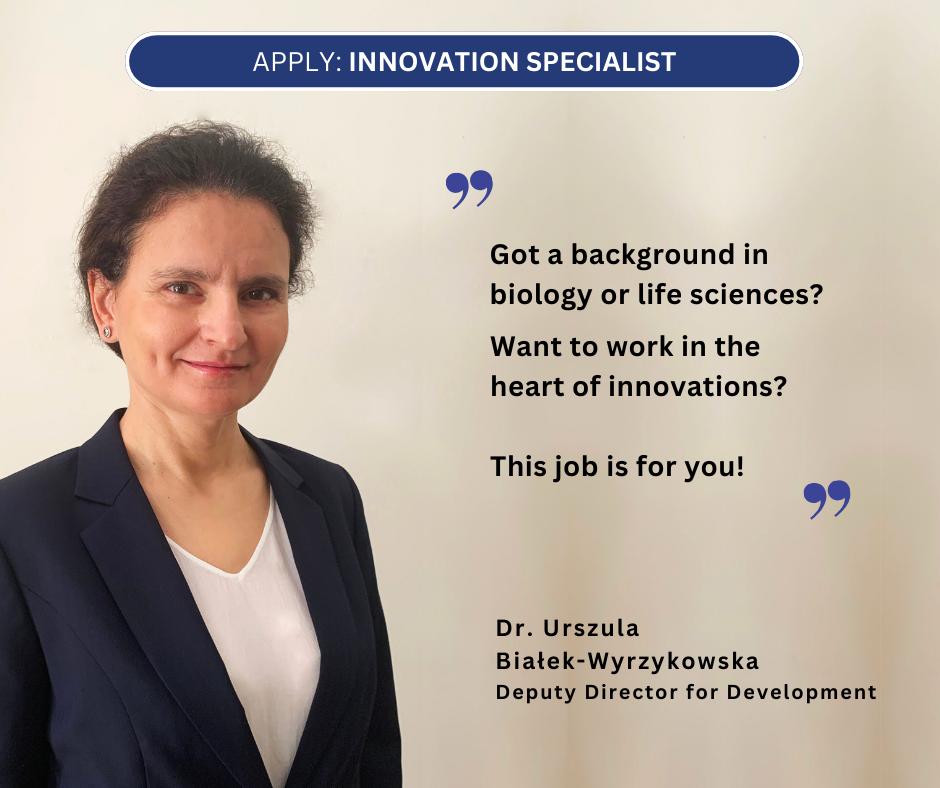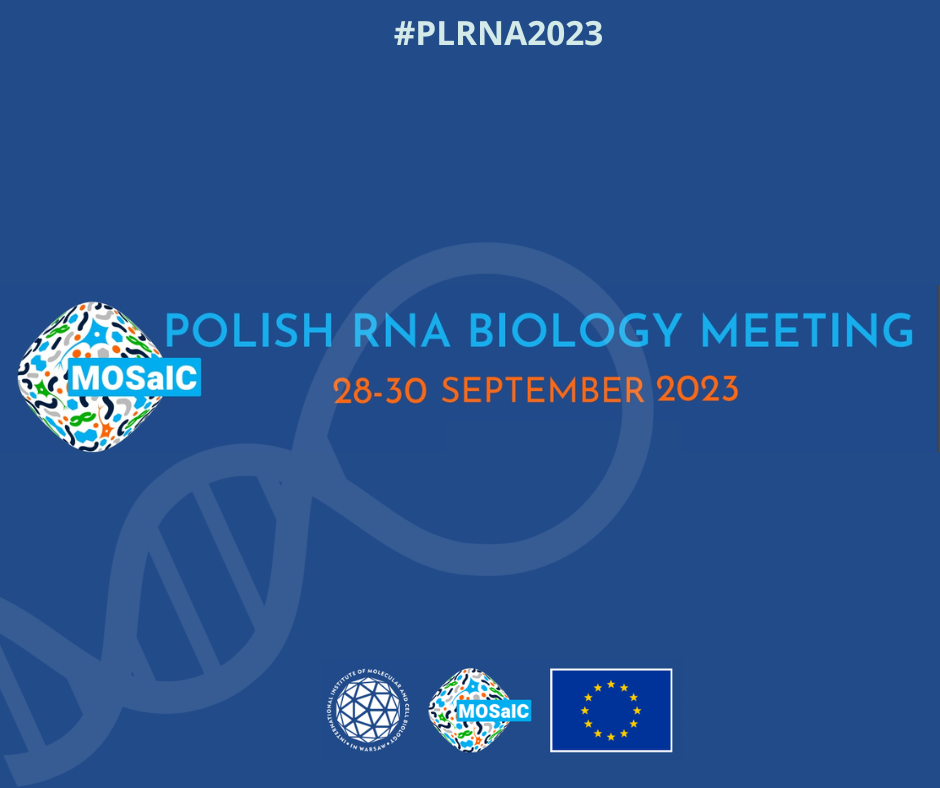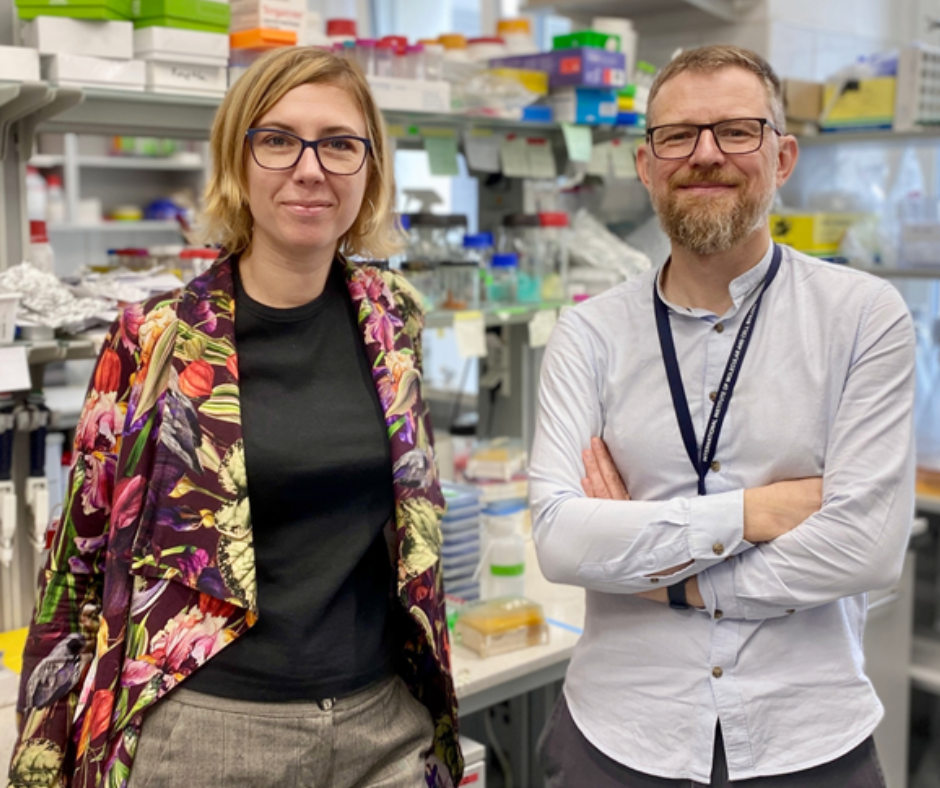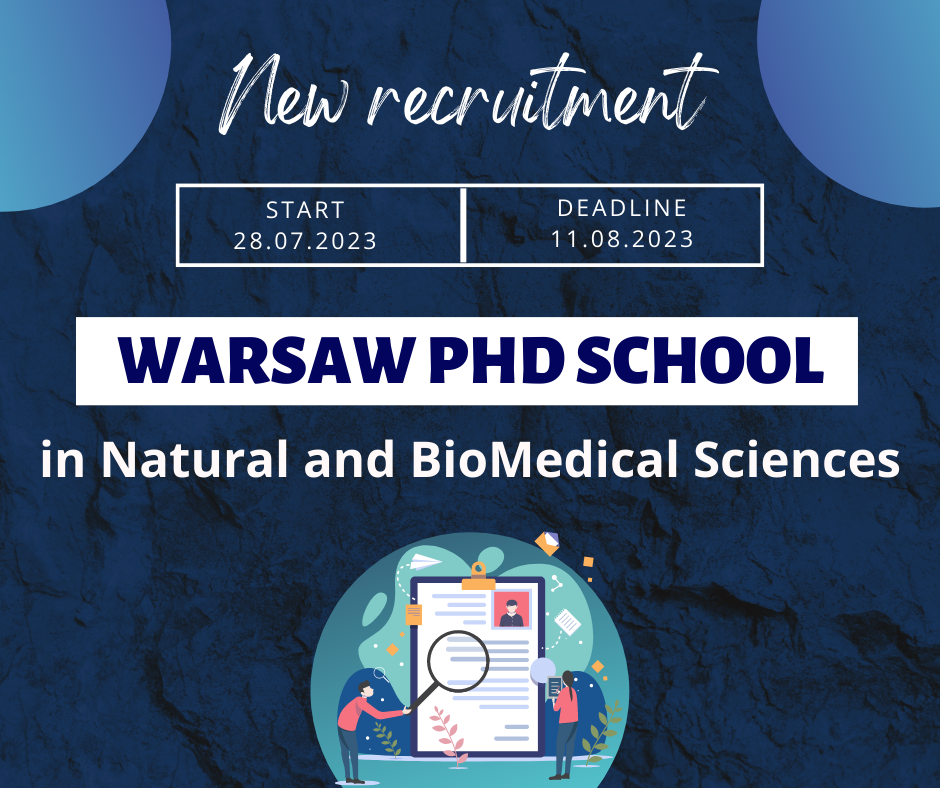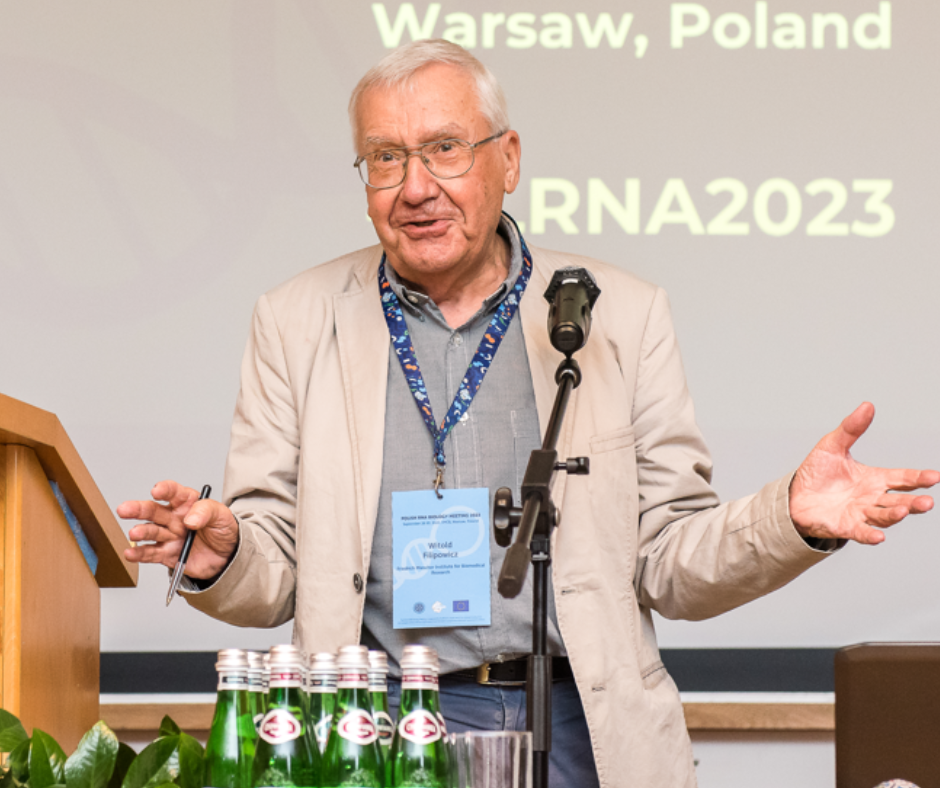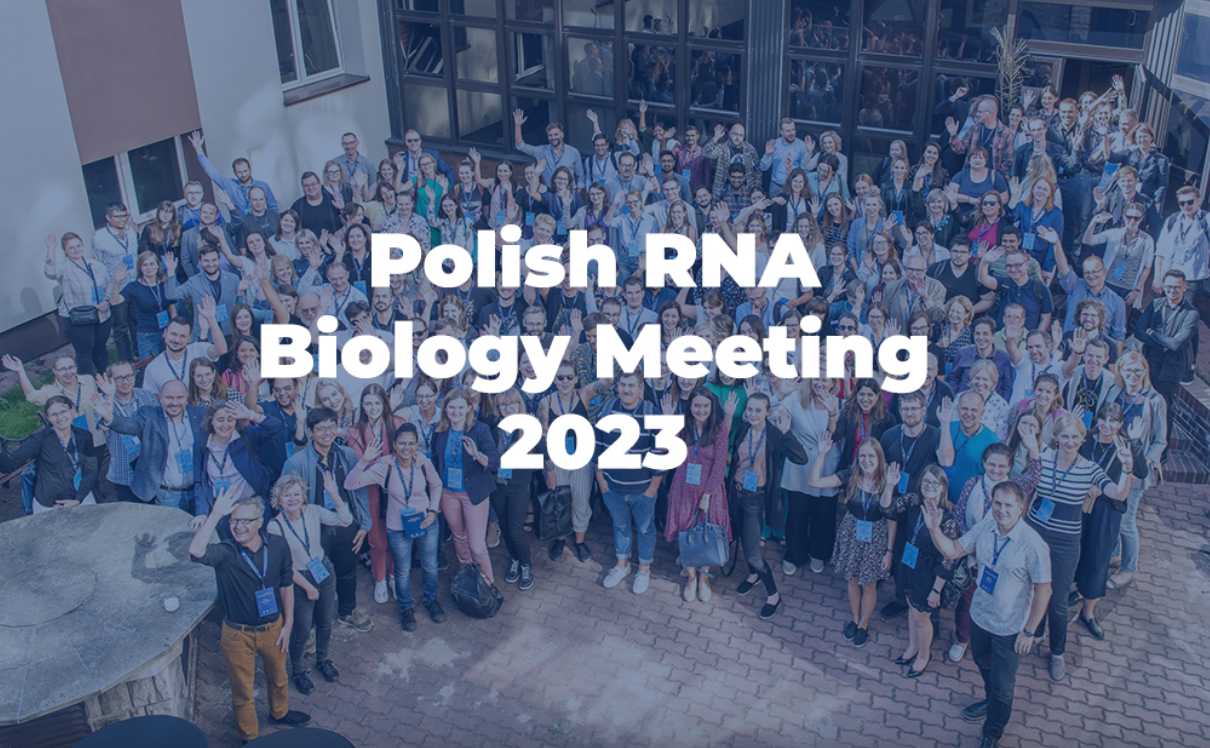The International Institute of Molecular and Cell Biology in Warsaw (IIMCB), Poland
invites researchers interested in becoming an Innovation Specialist to apply.
Do you have background in biological sciences (PhD, MD-PhD or equivalent)? Are you looking for an innovative path of your career development? Are you open to learn the essentials of knowledge valorization by engaging in a training-in-residence at the Flanders Institute for Biotechnology (VIB) in Belgium, which is IIMCB’s partner institution with 25 year history of successfully bridging research with commercialization? Are you ready to make a meaningful impact by translating IIMCB research discoveries into real-world applications? If so, this unique offer is for you.
The IIMCB hosts a vibrant, multinational community of scientists and is well connected internationally as exemplified by the composition of the IIMCB's International Advisory Board and the IIMCB's membership in EU-LIFE, which is an alliance of 15 top European research institutions. The IIMCB is on its way to unprecedented scientific and institutional growth.
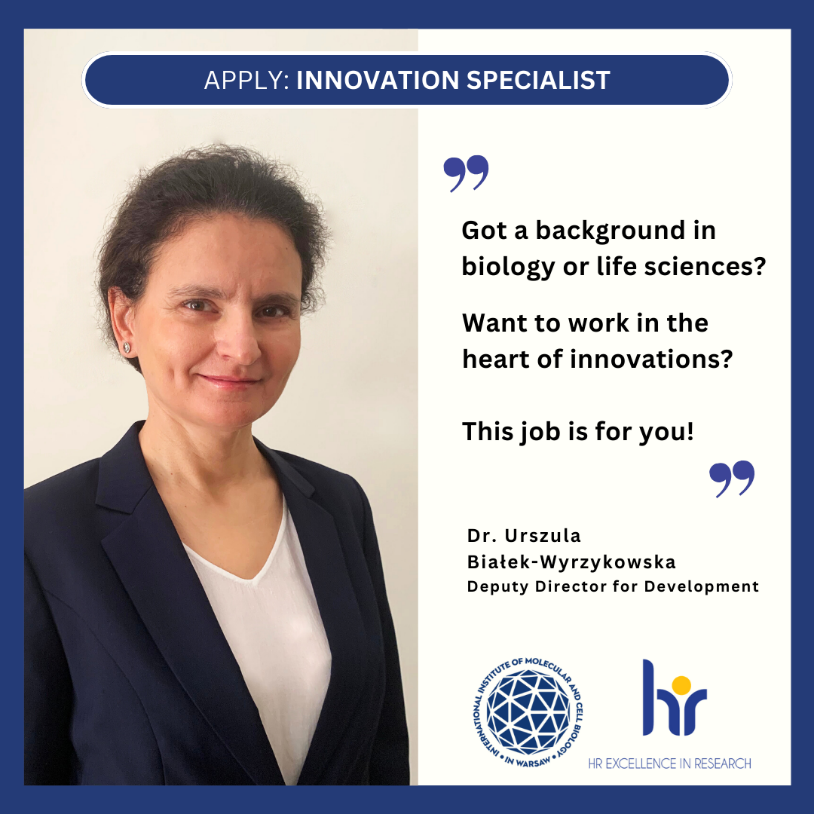
We are preparing to expand to 20 research groups by 2025, all involved in innovative translational projects in the fields of RNA biology and cell biology. We aim to become a unique Polish center where excellent science is combined with professional protection of intellectual property rights and commercialization. To this end, the IIMCB is establishing a dedicated technology transfer unit for translating basic science discoveries and research services into commercial applications and clinical innovations.
The Innovation Specialist will be one of the key people in these processes. The successful candidate will manage intellectual property assets of the IIMCB by providing professional support in the identification, reviewing, legal protection and licensing of IIMCB inventions. The successful candidate will become a core staff member of the new technology transfer unit at the IIMCB and will benefit from a one-year training-in-residence at the VIB located in Ghent, Belgium, where the candidate will gain ample expertise in identifying and managing intellectual property.
The establishment of a comprehensive system of technology transfer is a part of the IIMCB’s institutional project entitled “RNA and Cell Biology - from Fundamental Research to Therapies” (RACE) funded in the Teaming for Excellence programme under Horizon Europe.
Key responsibilities:
- Creating an environment at the IIMCB that fosters innovation and entrepreneurial thinking
- Engaging with researchers to inspire and motivate them to think about the relevance of their research to society and the practical application of their discoveries
- Monitoring the results of research conducted in the IIMCB laboratories to determine their commercialization potential and recommend whether intellectual property protection should be sought
- Evaluating freedom to operate for innovative projects, assisting in conducting patenting procedures
- Organizing, managing, and following all patents, trademarks, and copyrights
- Overseeing IP related issues in externally funded research projects, including drafting IP agreements and managing IP during projects implementation
- Providing IP training to IIMCB researchers and advising on all IP-related matters
Necessary qualifications:
- PhD in life sciences, MD-PhD or equivalent research experience
- Analytical mind, capable of analyzing a broad spectrum of life science topics and with the ability to deep-dive into scientific content
- High multitasking capacity combined with the ability to respect deadlines
- Excellent interpersonal and communication skills
- Fluency in oral and written English and Polish
- Readiness for 1-year training-in-residence at VIB, Ghent, Belgium
The IIMCB offers:
- Employment contract with the IIMCB and secondment for 1-year training-in-residence at VIB, Ghent, Belgium
- Full-time salary in the range of 9 000 - 11 000 PLN gross, including the period of secondment, and an additional allowance for a secondment of 10 400 PLN gross
- Full-time salary is complemented by an additional 13th salary* plus an annual bonus.
- Attractive social package (co-financing Multisport cards, Christmas, Easter and summer holiday bonuses, etc.)
- Additional paid vacation time starting from the 2nd year of employment
- Possibility to work in a hybrid mode
- Professional development and business travel opportunities
- Full organizational and administrative support by professional English-speaking staff
- Friendly, inclusive, international working environment
The application shall be written in English and should include:
- Cover letter explaining the motivation for joining the IIMCB
- Curriculum Vitae
- A concise statement of 1-3 professional achievements
- Contact information for two references
Applications should be sent to This email address is being protected from spambots. You need JavaScript enabled to view it., in the subject please include "IS" and your first and last name.
The deadline for applications is November 26, 2023.
Job interviews are scheduled for December 1, 2023.
Applications should include the statement: “I hereby agree to the processing of my personal data, included in the application documents by the International Institute of Molecular and Cell Biology in Warsaw, 4 Księcia Trojdena Street, 02-109 Warsaw, for the purpose of carrying out the current recruitment process.” Your personal data will be processed only for the purpose of the recruitment procedure by the International Institute of Molecular and Cell Biology in Warsaw. Full information is available at https://bit.ly/3UFWpY2.
*13th salary is calculated as 8.5% of the gross salary received in a given calendar year (excluding sick pay) under the condition of having worked a minimum of 6 months in a given year.
On September 28, 2023, Polish RNA Biology Meeting 2023 starts
- Our conference brings together keynote speakers from around the world alongside a thriving and expanding community of Polish RNA researchers. We hope that this event will serve as a platform for sharing findings and ideas, nurturing fresh collaborations, and catalyzing advancements in RNA biology - says Prof. Gracjan Michlewski, the Chairman of the Scientific Committee of Polish RNA Biology Meeting 2023.
Organized by the IIMCB, the conference aims to share the latest knowledge on RNA, establish new collaborations, and inspire the scientific community to explore new directions of research in this rapidly developing field.
- RNA, once regarded as a mere intermediary in the flow of genetic information, has emerged as a pivotal player in regulating diverse biological processes, from gene expression to protein synthesis. Recent breakthroughs in RNA research have revolutionized medicine, ushering us in a new era of genome editing and mRNA vaccines. Despite remarkable progress, much remains to be uncovered about RNA's role in organismal physiology and pathology, as well as its potential in medical and industrial applications - says Prof. Gracjan Michlewski.
Learn more about Polish RNA Biology Meeting 2023: CLICK HERE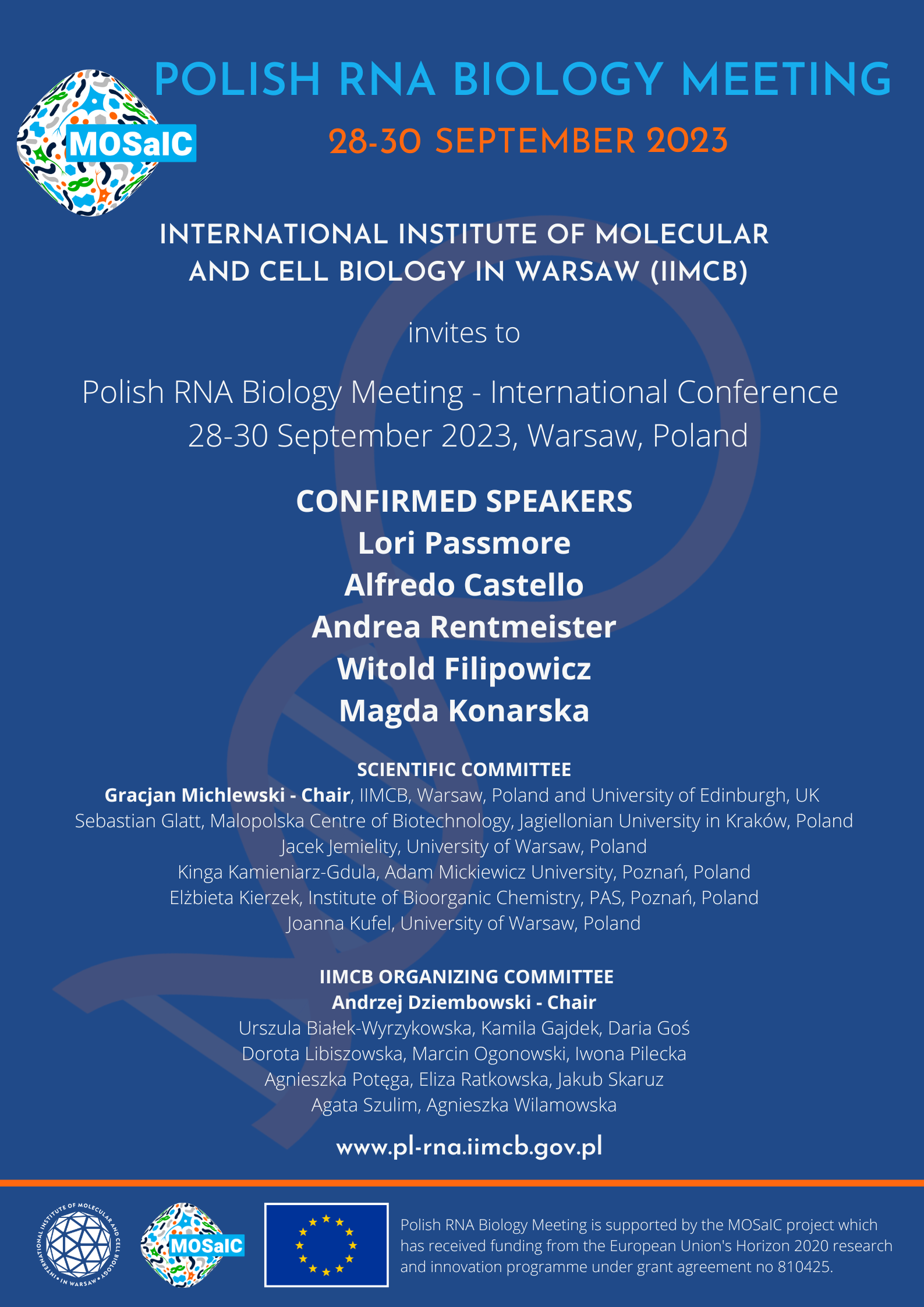
Polish RNA Biology Meeting 2023 (#PLRNA2023)
Polish RNA Biology Meeting 2023 - pictures
Saturday, 1:00 p.m: On the third day of #PLRNA2023 we had more fascinating talks and networking possibilities. The scientific committee announced the winners of the Best Poster and Talk Awards.
The next Polish RNA Biology Meeting will take place in Poznań in 2025.
Friday, 5:00 p.m: Ishani from IMoL PAN tells about her experience at #PLRNA2023
Friday, 1:00 p.m: The second day of Polish RNA Biology Meeting is underway.
Friday 9:00: We are grateful to the sponsors for supporting #PLRNA2023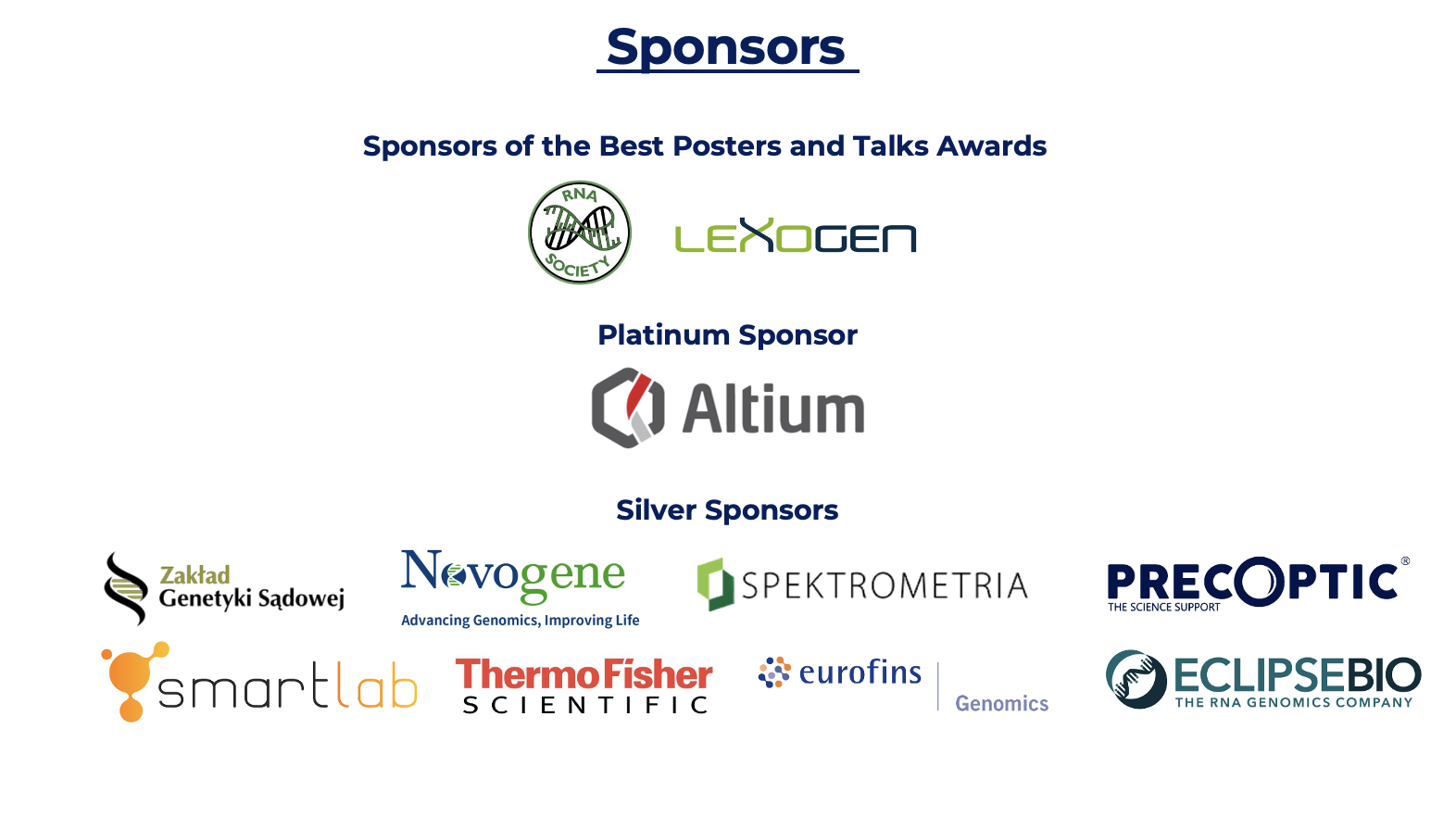
Thursday, 5:00 p.m.: RNA, once regarded as a mere intermediary in the flow of genetic information, has emerged as a pivotal player in regulating diverse biological processes, from gene expression to protein synthesis. Recent breakthroughs in RNA research have revolutionised medicine, ushering us in a new era of genome editing and mRNA vaccines. Despite remarkable progress, much remains to be uncovered about RNA's role in organismal physiology and pathology, as well as its potential in medical and industrial applications.
Thursday, 2:00 p.m: Alfredo Castello of the MRC-University of Glasgow Centre for Virus Research points out inspiring and interesting talks that are taking place at #PLRNA2023
Thursday, 12:00: At #PLRNA2023 you will hear 55 lectures and 70 posters.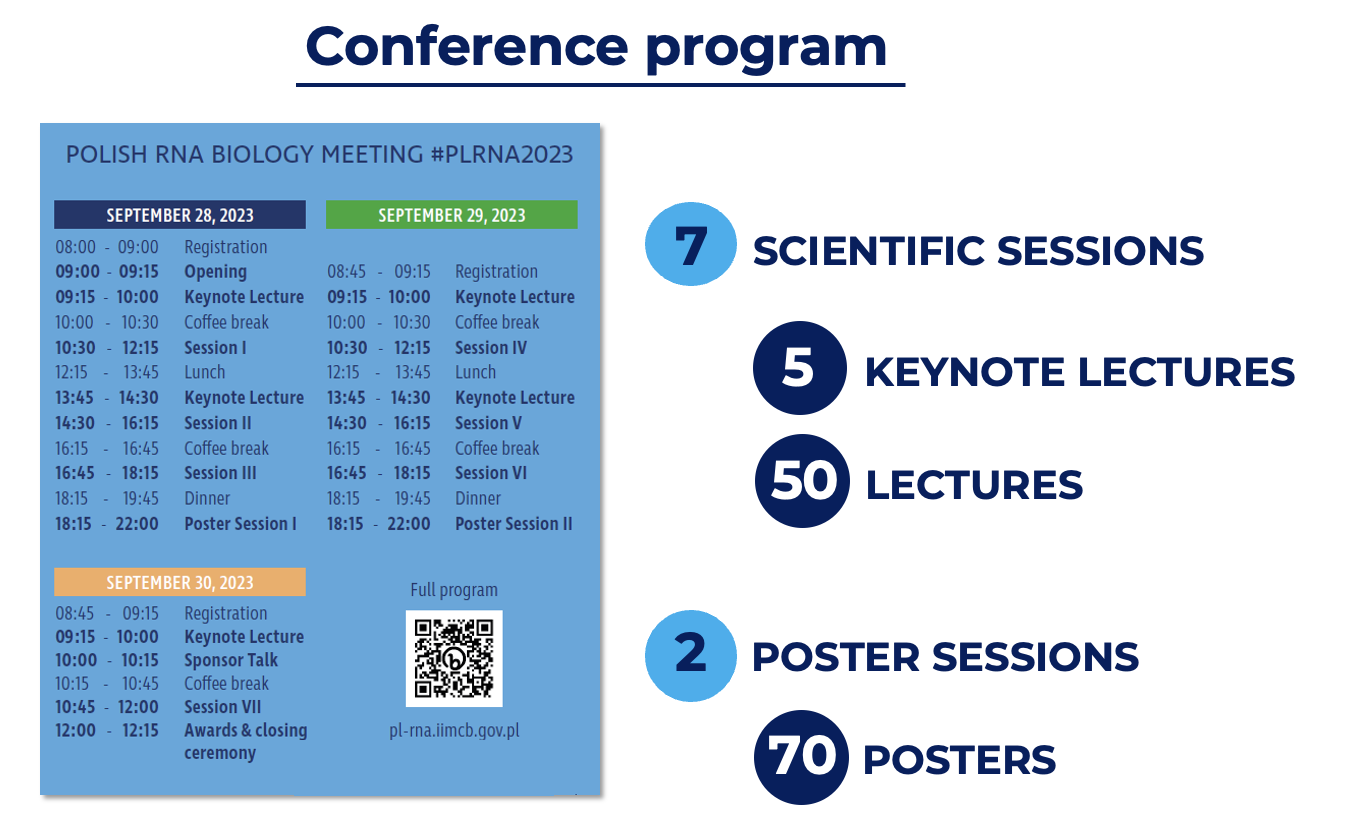
Thursday, 11:20: The event is supported by the EU's Horizon 2020 programme.
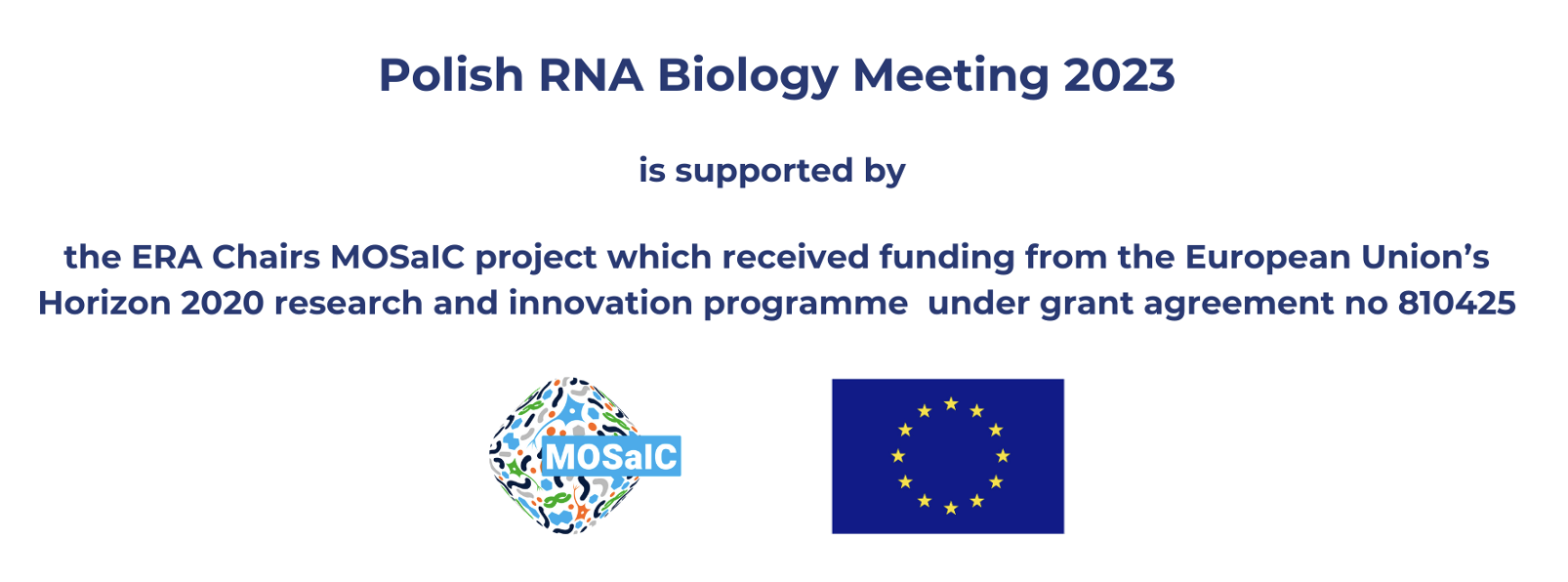
Thursday, 10:00: Prof. Witold Filipowicz presented "Traversing the RNA world: lessons from the past and some ideas for the future".
Thursday, 9:00: Marta Miączyńska, director of the IIMCB, started the Polish RNA Biology Meeting 2023
-
Learn more about Polish RNA Biology Meeting 2023: CLICK HERE

